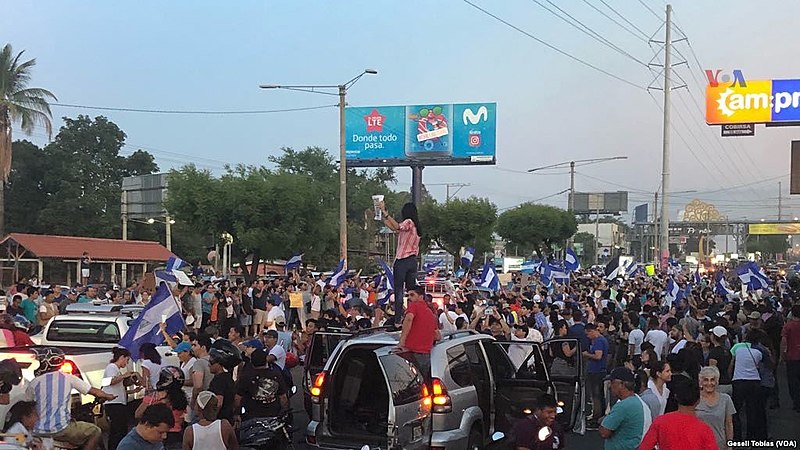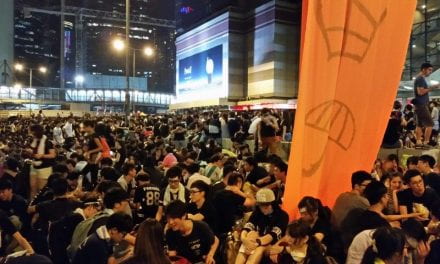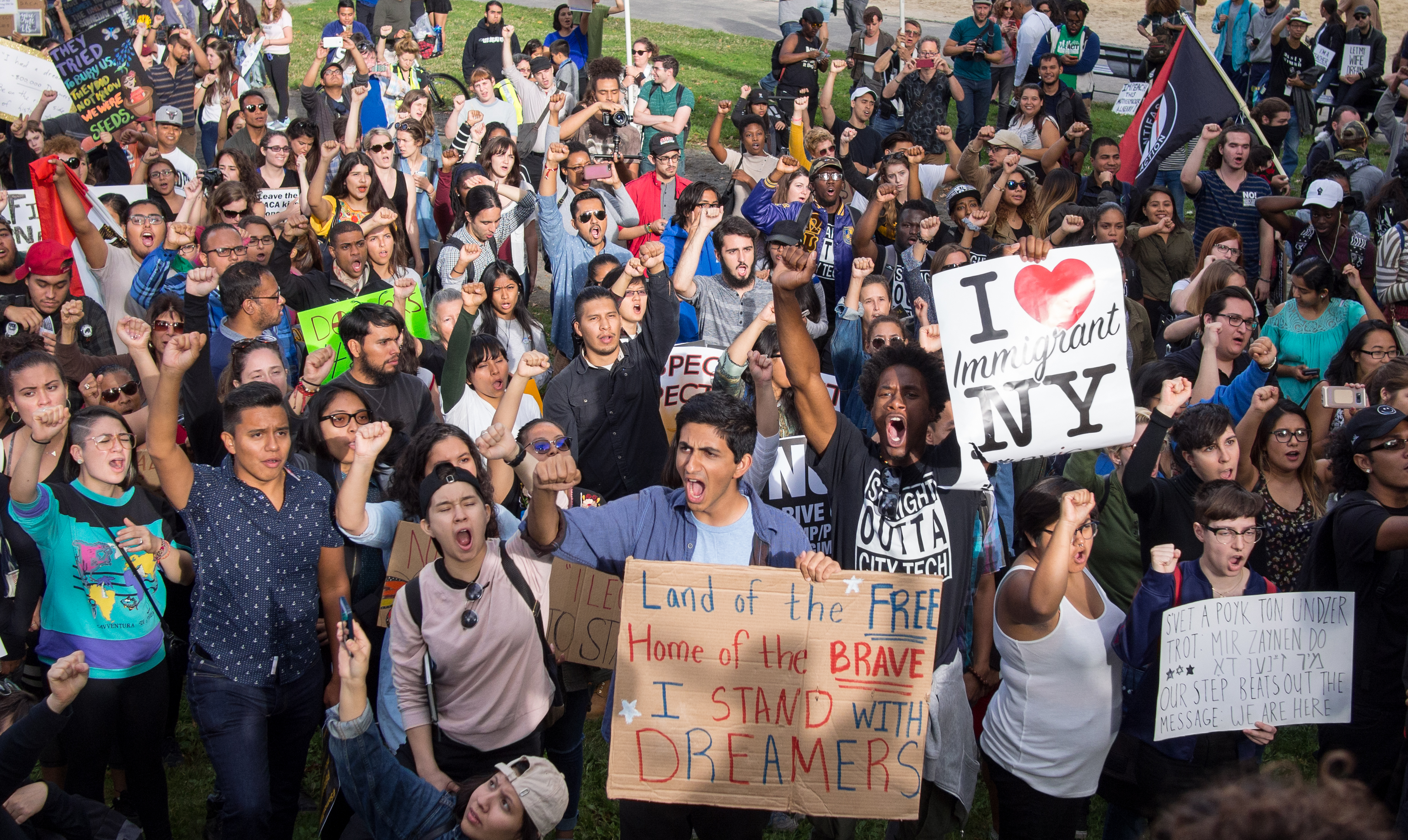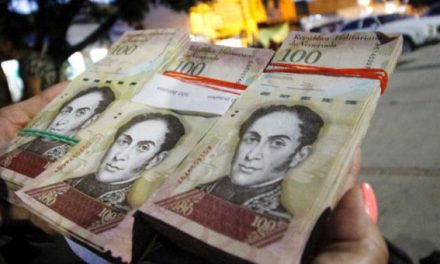By: Harry Nitzberg
In the past month, both the governments of Venezuela and Nicaragua have been faced with street protests that brought life to a standstill. Protesters in Managua blocked streets, “clash[ed] with government security forces[,] barricaded neighborhoods”,[1] and burned the “arboles de vida” (trees of life) sculptures that decorate the city’s roads.[2] On May 5th, citizens returned to the streets of Nicaragua to protest the deaths of people killed in April’s protests, which they blamed on President Daniel Ortega and his wife and Vice President Rosario Murillo Zambrana.[3] In Venezuela, the exact beginning of protests are difficult to definitively say because protests have occurred periodically, have included a variety of groups, and have protested both the economic crisis itself and the growing usurpation of power by the executive branch and its allies. For our purposes, the protests can be said to have begun in September 2016, when thousands of Venezuelans took to the streets to accuse President Nicaolas Maduro of causing the economic crisis and demand the end of his presidency.[4] Since then, 135 Venezuelans have died in protests according to Venezuelan human rights watchdog, the Penal Forum.[5] In addition, according to a Human Rights Watch report, “more than 5,400 people have been detained” and “in 53 cases involving at least 232 people documented in this report, detainees were subjected to physical and psychological abuse, with the apparent purpose of either punishing them or forcing them to incriminate themselves or others.”[6]
Given the similar political leanings of the two countries, similarly heavy-handed government responses to protests, and the similar visuals of protesters clashing with riot police, many have suggested that Nicaragua is sliding into a situation like that of Venezuela. Contrary to this brash generalization, there is a world of difference between the two situations.
First, the protests in the two countries were begun for vastly different reasons. Venezuela is in the midst of an economic crisis due to a fall in oil prices and persistent low oil production. Oil production has fallen to its lowest point since 2002,[7] when the country was facing a country-wide general strike. Inflation in Venezuela is projected to rise as high 13,864.6 percent.[8] There are shortages of medicine, food, and a variety of other basic goods, as a result of reduced revenue from oil, nationalizations of food producer’s land by the government, and price controls, which have led to looting.[9] If that was not bad enough, the Venezuelan government owes almost $50 billion in interest payments on its debt, double the value of its total petroleum exports in 2016.[10] In response to the protests against economic conditions, President Nicolas Maduro consolidated his power. In March of 2017, the Venezuelan Supreme Court dissolved the Venezuelan National Assembly for allowing three legislators who had been held in contempt by the Supreme Court to participate in the National Assembly.[11] The power stripped from the National assembly was then given to Maduro.[12] In the end of July 2017, Maduro replaced the dissolved National assembly with the Constituent Assembly, an elected body with the power to change the constitution.[13] In turn, the vast majority of the Venezuelan opposition boycotted the elections,[14] causing the Constituent Assembly to be filled with Maduro loyalists during the elections. Since then, the United States and Europe have levied sanctions against several top Venezuelan officials, the Venezuelan government and the state oil company PDVSA.[15]
In contrast, the protests in Nicaragua began in response to a resolution passed on April 16th that would have “increased contributions into the social security system by workers and employees but reduced the pensions of retired workers.”[16] More explicitly, “employees [would] have to contribute 7 percent of their salary to social security, up from a current 6.25 percent. Employers [would] have to contribute 22.5 percent of salaries from a current 19 percent. Pensioners [would] also have 5 percent of their pension taken out to be used for medical expenses.”[17] The initial pensioner protesters were quickly joined by businessmen and students across the country.[18] The students wielded stones and Molotov cocktails, which were quickly met by riot police wielding tear gas and guns equipped with rubber bullets.[19] Two weeks later, protesters returned to protest the government’s response to the first round of protests.
Unlike Venezuela, Nicaragua is not facing an economic meltdown. There are no mass shortages of basic goods, sanctions, world-topping homicide rates, back-breaking debt, or sky-high inflation. The current state of Nicaragua is not the result of an economic meltdown. The tension between the Ortega government and protesters is drawn from a single law, the public response to it, and the (frankly) idiotic response of the government to protests. Shortly after the onset of protests and the deaths of protesters, on April 22nd, the Ortega government revoked the controversial law.[20] Unlike the situation in Venezuela, the overall message of the protests has ceased to be about an existing condition; in Venezuela, the existence of an economic meltdown, and in Nicaragua the existence of the law. They have come to be centered on the government’s response to the initial protests, as shown by the return of protesters two weeks after the law was revoked.
Despite the vast differences between the two crises, there is an unfortunate similarity between the two situations, the cyclical pattern of violence that has left many dead. Both governments initially responded to protests in a heavy-handed manner, which fueled more protests, which lead to more protests and heavy-handed responses. During the protests in Venezuela, one United Nations report found that “tear gas canisters were used at short range, and marbles, buckshot and nuts and bolts were used as ammunition…journalists and media workers have indicated that security forces targeted them to prevent them from covering demonstrators [and] that armed colectivos[21] routinely break into protests on motorcycles, wielding firearms and harassing or in some cases shooting at people.[22] Complimentarily, police officers tasked with countering the protests were faced with protester-built barricades, explosives, Molotov cocktails, and assortment of other tactics.[23]
During the initial wave of protests in Nicaragua, riot police were sent out to contain protests. In the ensuing skirmishes that emerged over the following few days, 58 protesters were left dead.[24] In addition, in a video that has gone viral throughout Latin America and emigrant communities throughout the world, a reporter was killed by (what was widely assumed to be) government sniper fire, while the reporter was covering the protests live via Facebook.[25] The video of the dead reporter and the deaths of so many other protesters, added gasoline to an already raging fire, casuing what should have been a limited protest to become a country wide crisis.
Given these similarities, many have projected similar outcomes. People have projected that the protests will end when Maduro and Ortega step down or are forcibly removed from power. While Maduro’s desperate effort to consolidate power via arrests, rigging elections,[26] and replacement of the parliament with the Constituent Assembly may very well have driven the outcome of the Venezuelan crisis further in that direction, the Ortegas may still have hope of staying in power.
In a letter to the Episcopal Conference of Nicaragua, President Ortega said, “We agree to work on each of the points raised (by the bishops), taking into account that all of them reflect their goodwill as mediators and witnesses. We are all ready to attend to your call for dialogue at the earliest possible date, for the peace of all Nicaraguans.”[27] On May 14th, the government of Nicaragua announced an invitation to the Inter-American Commission on Human Rights to visit and report on the state of human rights in Nicaragua.[28] In addition, the Nicaraguan military has publically reaffirmed that it has not/will not participate in the “repress [ion]” of protesters and that it “think[s that] dialogue is the solution”.[29] With both the military and political leadership of the country having given signs that they are open to a peaceful solution, there may be hope for Nicaragua yet. Sadly, the same cannot be said for Venezuela.
[1] Kirk Semple, “Nicaragua Roiled by Protests Over Social Security Benefits,” New York Times (New York, NY), April 24, 2018.
[2] Tom Phillips, “Nicaragua’s toppling ‘trees’ strike ominous note for Daniel Ortega’s rule,” Guardian, April 28, 2018.
[3] BBC, “Nicaragua protests: Tens of thousands in new anti-government rallies”, BBC, May 10, 2018.
[4] “Venezuela Profile- Timeline,” BBC News online. Last modified August 2017. http://www.bbc.com/news/world-latin-america-19652436
[5] “Victims of Repression- Foro Penal,” Penal Forum online. Last modified August 27, 2017.
[6] Brutality, Torture, and Political Repression in Venezuela,” Human Rights Watch online. Last Modified November 29, 2017.
[7] “Venezuela Crude Oil Production |1973-2018 | Data | Chart |Calendar,” Trading Economies. Last Modified May 15, 2018. https://tradingeconomics.com/venezuela/crude-oil-production
[8] “Republica Bolivariana de Venezuela,” IMF online. Last modified April 2018. http://www.imf.org/en/Countries/VEN
[9] John Otis, “We loot or we die of hunger’: food shortages fuel unrest in Venezuela,” Guardian, January 21, 2018.
[10] “OPEC: Venezuela,” Organization of Petroleum Exporting Countries. Last Modified 2017. http://www.opec.org/opec_web/en/about_us/171.htm
[11] Rafael Romo, “Venezuela’s high court dissolves National Assembly,” Cable News Network, March 30, 2017.
[12] Ibid.
[13] Elizabeth Melimopoulos, “Venezuela opposition parties to boycott constitutional assembly,” Al Jazeera, July 31, 2017.
[14] Jim Wyss, “Venezuela opposition parties to boycott constitutional assembly,” Miami Herald, May 31, 2017.
[15] “Venezuela Related Sanctions,” US Department of the State. Online. Last Modified March 19, 2018 https://www.state.gov/e/eb/tfs/spi/venezuela/ ; “Venezuela: EU sanctions 7 individuals holding official positions,” Council of the European Union online. Last Modified January 22, 2018.
[16] Spencer Feingold, “Nicaragua scraps controversial social security reforms,” Cable News Network, April 22, 2018.
[17] Oswaldo Rivas, “Nicaraguans take to streets in protest over social security changes,” Reuters, April 19, 2018.
[18] Ibid.
[19] Ibid.
[20] Spencer Feingold, “Nicaragua scraps controversial social security reforms,” Cable News Network, April 22, 2018.
[21] In this context, colectivos are armed groups of government supporters.
[22] “UN human rights team’s findings indicate patterns of rights violations amid mass protests in Venezuela,” United Nations Human Rights Office of the High Commissioner online. Last Modified August, 8, 2017. http://www.ohchr.org/EN/NewsEvents/Pages/DisplayNews.aspx?NewsID=21948&LangID=E
[23] Joe Sterling, Flora Charner, and Patrick Gillespie, “Deadly election day in Venezuela as protesters clash with troops,” Cable News Network. July 30, 2017.
[24] Nicole Chavez, Samantha Lugo and Elisabeth Plaza, “More than 40 people were killed in unrest in Nicaragua, rights groups say,” Cable News Network. April 29, 2018.
[25] Samuel Osborne, “Nicaraguan journalist shot dead on Facebook Live while covering protests,” Independent, April 23,2018.
[26] Brutality, Torture, and Political Repression in Venezuela,” Human Rights Watch online. Last Modified November 29, 2017.
[27] Al Jazeera, “Nicaragua: Ortega to allow inquiry into protest deaths,” Al Jazeera, May 13, 2018.
[28] “Gobierno de Nicaragua invitó a la CIDH a visitar el país,” El19digital online. Last Modified May 14, 2018.
[29] Reuters Staff, “Nicaraguan military says will not suppress protests: AFP,” Reuters, May 12, 2018.







